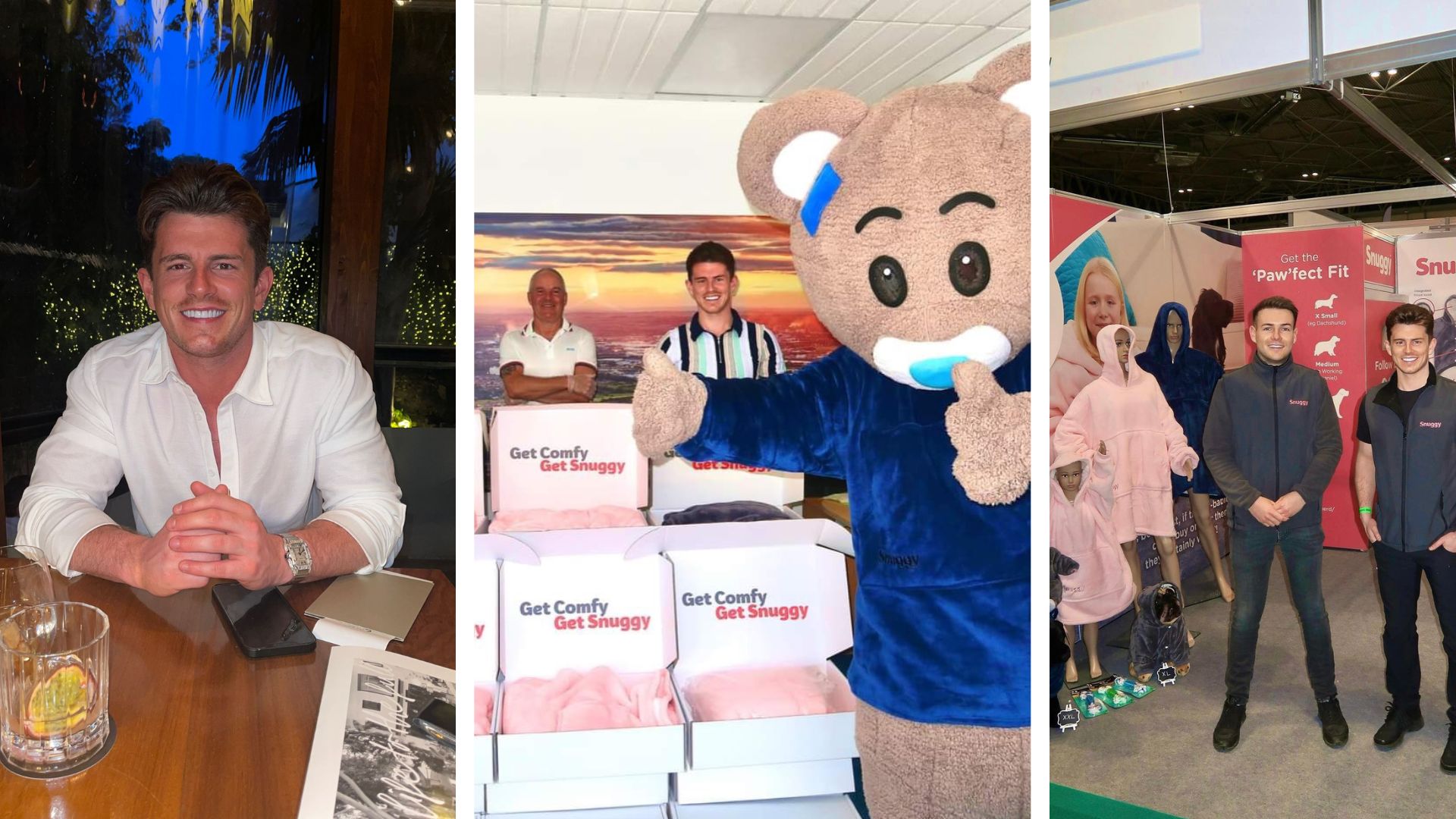£1 Million Business Owner Shares 5-Step Method To Land ANY Remote Job

Increasing numbers of Brits are embracing the work-from-home lifestyle, and it looks like 2023 will see more companies moving towards either a hybrid or fully remote working model.
For those of us who are still commuting into an office each day, how can we make the change to working from home – or becoming a digital nomad?
Jack Griffiths, who heads up luxury loungewear company Snuggy, has been working with digital nomads for the last few years – and he plans to increase the percentage of his remote workforce in 2023.
The CEO told Digital Adoption the top qualities he looks for in digital nomads, along with a 5-step method to land remote work: ‘A good work ethic, being honest and demonstrating trustworthiness are the three main factors I consider when looking for someone to work remotely for me.
‘These qualities are still needed if you were to be working in-house for someone, but in my opinion, they are more important when you aren’t there to manage them.
‘Of course experience in the relevant industry is essential, but what I value more is someone’s work ethic and professional morals. Experience can be improved in time, but this foundation is essential.
‘That being said, there are specific actions candidates can take to prove they’re the best person for a remote job. For example, it’s always good to have examples of previous work that relates to the business you are offering your services to. Previous case studies from anyone you have worked with are great too! Overall, you want to demonstrate you can do the job and provide testimonials from others in the industry.
‘Communication is key, and it’s even more vital when you’re remote. Dropping off the radar simply isn’t an option. Sending regular updates to your client on what your plans are and what you have already done will help to keep everyone in the loop and reassure them that a project is on track. If you’re used to logging your hours in an office, then just clocking off and going home, you’ll need to up your levels of communication if you want to start working from home.
‘In this day & age, presenting yourself or your service professionally across social media is very important. Make sure you have professional accounts which are separate to your personal ones. When you’re building your professional social media accounts, include as much previous feedback as you can on your posts. Try to paint a picture of yourself as reliable and hard-working.
‘When you’re positioning yourself in the industry as a remote worker, you want to make sure you can be found. If your ideal employers or clients can’t find you on social media when they do background checks, this will be an immediate red flag for them. That’s why I recommend creating a LinkedIn, Facebook and Instagram. These are the first places I look when I’m vetting candidates.
‘Another quality which I find really attractive is enthusiasm. You want your remote worker to be keen to learn about the business and what the overall goals are. If you are on an introductory call with a prospective employer or client, be sure to ask them plenty of questions. Try to find out as much information as possible so you are well-equipped to do the job. Make sure you take notes and follow up the call with a really nicely presented email. In this message, outline what you can do for them and tell them how excited you would be to have the opportunity to grow the business together.
‘I’ve grown brands online for over 10 years now. Using my experience, I’ve come up with a five-step method which will help any remote worker with growing their client base and grabbing the attention of a remote employer.
Research the brand you want to work for. Identify areas they could be doing better in, or sectors you believe you could add your expertise to.
Identify a free asset you can send to this brand. For example, if you are a photographer pitching an e-commerce company, you may want to prepare a selection of high-quality photos which are free for them to use.
Establish ways you can make the asset better than what the brand already has. The photographer could figure out new ways to sell the brands’ products by providing improved lifestyle, detail or packaging shots, for example.
Create the asset, keeping the brand in mind. In other words, if you are taking photos, ensure the themes and brand colours align with existing materials.
Send the brand your assets with a polite message offering them and your ongoing service at a competitive rate. Provide some for free, and provide limited access to the rest. For example, the photographer might send 5 images and watermark the other 20.
‘The idea behind this process is to give the business owner a taste of what you can do without having to be told or given instructions. This tells the business owner straight away that you can be trusted to make good content and to work hard.
‘This concept works for all kinds of business. The key is that you’re making a sacrifice in the early days and essentially working for nothing. This will be worthwhile in the long run as you are establishing trust and credibility, along with demonstrating you can do the job with minimal guidance.
‘If you are still thinking about who to pitch or the kind of work you want to do remotely, there are three questions you can ask yourself regardless of your skillset or experience.
Who would be my ideal client or employer?
What can I offer them for free to grab their attention?
What is my offer to them going to be once I have their attention?
‘When you have the answer to these three questions, get to work!
‘Try to steer away from ‘salesy’ emails & pitches. Get straight to the point and have the attention-grabbing free content attached in the first email.
‘This technique has worked for me on both sides – in the past, I would do it myself, and I have also hired remote workers who used this method. At Snuggy we have staff and ongoing working relationships with around 15 people. Only 6 of us are actually working in-house; the rest are external and work remotely. It works great for us.
‘We are definitely planning on taking on more remote workers in the next 12 months. We are predicting our workforce to rise by 10 people in 2023 and 6/7 of them will be remote workers.’
A spokesperson for Digital Adoption said: ‘Jack has shared an incredibly useful process that anyone can use to get started, or build on, their remote working setup. By demonstrating a good work ethic, showing off your skills and helping brands out by providing them with high-quality materials free of charge, you’re ensuring you stand out from the crowd and increase your chances of landing that remote job contract.’






